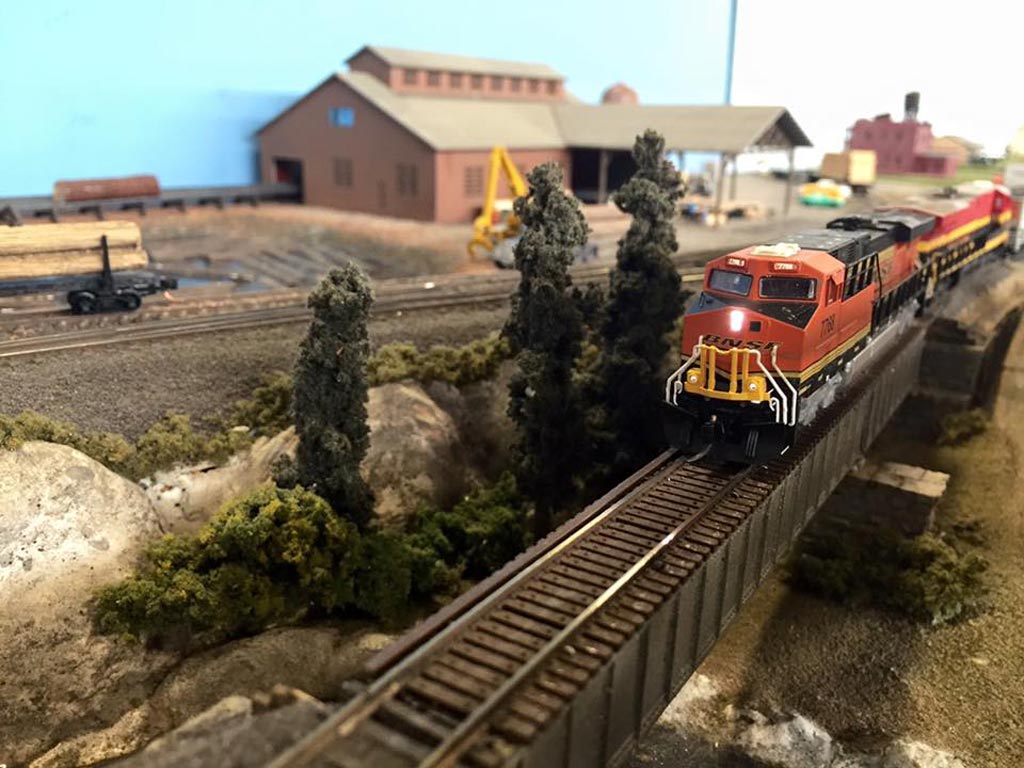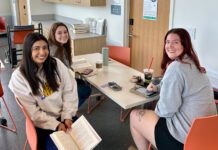
On the first Saturday of each month, the Green Country Model Railroaders’ Association meets at its club on Charles Page Boulevard in Tulsa to greet model railroad enthusiasts, educate visitors and run sophisticated model trains on the group’s multi-level layout, a complex construction of various tracks and scenery.
Randall Smith, secretary for the association, has had a fascination with model trains since before he can remember.
“Apparently I have had some kind of toy train since I was 9 months old,” Smith says, “and my grandparents gave me a Lionel train for Christmas a couple of years after that. My first real model railroad came about in 1969, when my dad gave me the materials to build an HO layout, which he and I built in the garage.”
(Model railroading has about a dozen scales; an early scale was called the O. Later came a scale half its size, known as half of O or HO.)
Green Country association board member Al Clark and Bruce Alcock, president of the OK N-Rail club in Oklahoma City, also link their passions for the hobby with nostalgic childhood memories. Clark remembers the exact year (1953) when his father built an American Flyer, which he “couldn’t touch until high school,” he says.
Alcock recalls at age 4 becoming intrigued with his father’s layout.
“Model railroading is not just about trains going around and round,” says Alcock, whose club meets monthly on OKC’s south side. “Some people do extensive research before planning their layout.”
For many hobbyists, the intricate nature and diversity of talents needed for model railroading are alluring.
“Building a complete model railroad covers a large set of skills and interests: carpentry to build the layout itself; electrical to wire the layout; civil engineering to design the tracks and scenery; and of course, modeling skills, such as kit assembly and painting,” Smith says. “A club like GCMRA can be a great resource for people who need to build the skills in one area or another. In addition, club members may trade work in their respective areas of interest with others who have less interest or ability in those areas.”
Both clubs often travel with modular layouts to introduce the public to the joys and intricacies of model railroading. In addition, Green Country members work with Operation Lifesaver to teach train and railroad safety, particularly to younger generations unfamiliar with rail as a mode of transportation.
Model railroading also provides an opportunity to connect with others, be they strangers with similar interests in the hobby or your own family.
“Oklahoma N-Rail currently has 35 members, including several families where both parents and children are members of the club,” Alcock says. “We encourage parents to join so their children can run trains on our layout. Model railroading can be a great hobby to be shared by all members of the family, especially considering the multi-faceted aspect of the hobby.”
Smith adds: “Model railroading makes a fantastic hobby since it covers such a large area. It offers something for almost every interest. Model railroads can be big or small, cheap or expensive, simple or complex. They can be built by individuals, groups of friends or formal clubs. A model railroader can build everything him or herself, purchase everything – including a complete railroad already built – or anything in between.”
Both clubs welcome new members and visitors. For more information, visit oknrail.org and gcmra.org.

























